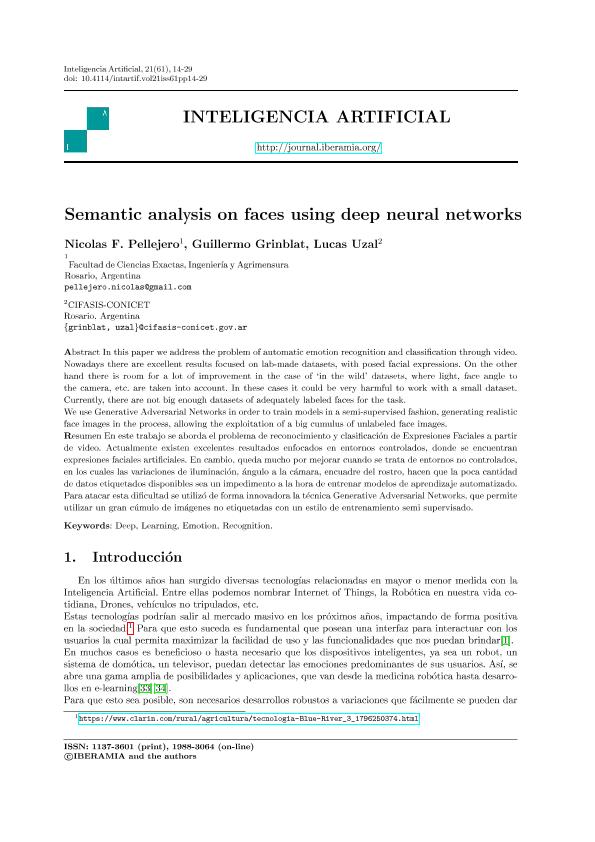Artículo
En este trabajo se aborda el problema de reconocimiento y clasificación de Expresiones Faciales a partir de video. Actualmente existen excelentes resultados enfocados en entornos controlados, donde se encuentran expresiones faciales artificiales. En cambio, queda mucho por mejorar cuando se trata de entornos no controlados, en los cuales las variaciones de iluminación, ángulo a la cámara, encuadre del rostro, hacen que la poca cantidad de datos etiquetados disponibles sea un impedimento a la hora de entrenar modelos de aprendizaje automatizado. Para atacar esta dificultad se utilizó de forma innovadora la técnica Generative Adversarial Networks, que permite utilizar un gran cúmulo de imágenes no etiquetadas con un estilo de entrenamiento semi supervisado. In this paper we address the problem of automatic emotion recognition and classification through video. Nowadays there are excellent results focused on lab-made datasets, with posed facial expressions. On the other hand there is room for a lot of improvement in the case of `in the wild' datasets, where light, face angle to the camera, etc. are taken into account. In these cases it could be very harmful to work with a small dataset. Currently, there are not big enough datasets of adequately labeled faces for the task.\\ We use Generative Adversarial Networks in order to train models in a semi-supervised fashion, generating realistic face images in the process, allowing the exploitation of a big cumulus of unlabeled face images.
Semantic analysis on faces using deep neural networks
Fecha de publicación:
03/2018
Editorial:
Asociación Española de Inteligencia Artificial
Revista:
Inteligencia Artificial
ISSN:
1137-3601
e-ISSN:
1988-3064
Idioma:
Inglés
Tipo de recurso:
Artículo publicado
Clasificación temática:
Resumen
Palabras clave:
DEEP
,
EMOTION
,
LEARNING
,
RECOGNITION
Archivos asociados
Licencia
Identificadores
Colecciones
Articulos(CIFASIS)
Articulos de CENTRO INT.FRANCO ARG.D/CS D/L/INF.Y SISTEM.
Articulos de CENTRO INT.FRANCO ARG.D/CS D/L/INF.Y SISTEM.
Citación
Pellejero, Nicolas Federico; Grinblat, Guillermo Luis; Uzal, Lucas César; Semantic analysis on faces using deep neural networks; Asociación Española de Inteligencia Artificial; Inteligencia Artificial; 21; 61; 3-2018; 14-29
Compartir
Altmétricas




